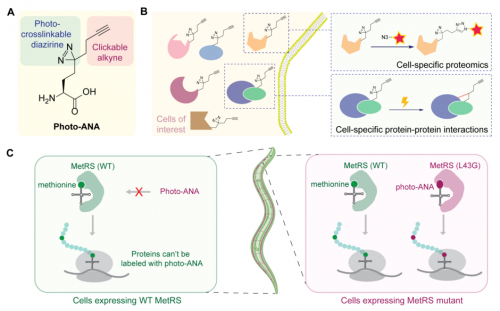Figure 1. Cell-selective MACSPI analysis in C. elegans. Adapted from Huang et al., 2024, PNAS.
基於非天然氨基酸探針 photo-ANA 的化學蛋白組學方法 MACSPI。
(A):photo-ANA 的化學結構
(B):化學蛋白組學方法如何用於捕獲組織特異性蛋白組和蛋白互作組
(C):通過控制 MetRS 酶的變體在組織特異性的表達,實現在不同組織中選擇性標記蛋白質。
(圖片來源:期刊論文 Huang et al., 2024, PNAS.)
Multicellular organisms, like animals and plants, have complex cells with diverse functions. This complexity arises from the need for cells to produce distinct proteins that interact with each other. This interaction is crucial for cells to carry out their specific tasks and to form complex molecular machinery. However, our current understanding of such protein-protein interactions often lacks cellular contexts because they were usually studied in an in vitro system or in cells isolated from their tissue environment. Effective methods to investigate protein-protein interactions in a tissue-specific manner are largely missing.
To bridge this technology gap, a collaborative research team of The University of Hong Kong (HKU), led by Professor Xiang David LI from the Department of Chemistry and Professor Chaogu ZHENG from the School of Biological Sciences, both from the Faculty of Science, along with Dr Xiucong BAO from the School of Biomedical Sciences, Li Ka Shing Faculty of Medicine, recently developed a novel chemical biology approach to label proteins from specific cells with a bifunctional amino acid probe that allows labelled proteins to be isolated and captures protein-protein interaction through photo-crosslinking. This new method, Methionine Analog-based Cell-Specific Proteomics and Interactomics (MACSPI), uses a chemical probe to label proteins in specific cells and capture their interactions. Using this approach, the team has identified many new tissue-specific proteins and protein interactions, helping us better understand how cells work in living organisms and study various biological problems, such as organ development and disease pathogenesis. The research work was recently published in a leading multidisciplinary journal – Proceedings of the National Academy of Sciences (PNAS).
Innovative design
The team designed and synthesised an unnatural amino acid (photo-ANA) that is structurally similar to methionine, the naturally occurring amino acid, but with two additional components (see Figure 1). One component is an alkyne group, which can be used as a chemical handle for the labelled proteins to be extracted and purified. The other is a diazirine group, which can be activated by light to create stable covalent linkages between the labeled proteins and any molecules they interact with. Next, the team engineered an enzyme called MetRS to create a variant that can recognise and incorporate the unnatural amino acidinto proteins as they are being built. By controlling the expression of this engineered enzyme in specific tissues, only proteins from the tissue of interest are labelled by chemical probe. Moreover, with light-induced crosslinking, protein complexes from specific tissues can be captured and isolated.
As a proof-of-concept, the team applied the MACSPI method to profile proteins from muscle cells and neurons, respectively, in a model organism called C. elegans and found many novel tissue-specific proteins. The team also demonstrated the method’s utility in capturing tissue-specific protein-protein interaction by identifying tissue-specific interactors of a ubiquitously expressed protein, such as the molecular chaperone called HSP90. It was found that HSP90 binds to distinct sets of proteins to regulate different biological processes in muscles and neurons.
‘This study is an excellent example of how innovative chemical labelling methods can help solve difficult biological problems,’ said Professor Xiang David Li. ‘Understanding protein-protein interaction at the cellular resolution is often critical to decipher the molecular mechanism of a pathological process. For example, we are currently exploring the functions of the neuronal HSP90 interactors we identified; some appear to be involved in neurodegeneration in a Parkinson’s disease model,’ said Professor Chaogu Zheng. The team envisions that the MACSPI method can be used in many multicellular organisms to profile proteomes and interactomes with spatial and temporal specificity, which can facilitate a broad spectrum of biological and biomedical research.
About the research team
This study is a collaboration among Professor Xiang David Li’s team at the Department of Chemistry (Faculty of Science), Professor Chaogu Zheng’s team at the School of Biological Sciences (Faculty of Science), and Dr Xiucong Bao’s team at the School of Biomedical Sciences (Li Ka Shing Faculty of Medicine), The University of Hong Kong. Postdoctoral research fellow Dr Siyue Huang from Professor Li’s team and research postgraduate student Ms Qiao Ran from Professor Zheng’s team are co-first authors of the study. This work was initially supported by seed funds from the Strategic Interdisciplinary Research Scheme at HKU and subsequently supported by grants from the Hong Kong Research Grants Council Collaborative Research Fund, the Areas of Excellence Scheme, and the General Research Fund, Food and Health Bureau, and the National Natural Science Foundation of China.
About the research paper: “Huang, S.#, Ran, Q.#, Li, X.-M., Bao, X.*, Zheng, C.*, and Li, X.D.* MACSPI Enables Tissue-Selective Proteomic and Interactomic Analysis in Multicellular Organisms. Proc. Natl. Acad. Sci. U.S.A. 2024 May 13”
Click here to view the journal paper.
全新化學生物學方法,剖析特異性蛋白相互作用
動植物等多細胞生物中,器官和組織有複雜的細胞結構和生物功能。這些結構、功能的複雜性,源於細胞產生特定的蛋白質並與其他蛋白質進行相互作用。這種組織特異性蛋白質,對於細胞執行其特定任務和形成複雜的分子機制,至關重要。然而,現有的研究通常只能在體外系統中、或從組織環境分離出細胞來進行,仍然缺乏有效的方法以針對組織特異性的蛋白質相互作用來進行研究。
為了填補這一技術空白,由香港大學(港大)理學院化學系李祥教授、生物科學學院鄭超固博士、港大李嘉誠醫學院生物醫學學院鮑秀叢博士所率領的合作研究團隊,最近開發了一種全新的化學生物學方法 MACSPI(Methionine Analog-based Cell-Specific Proteomics and Interactomics),利用一種名為「photo-ANA」的雙功能氨基酸探針來標記來自特定細胞的蛋白質,並研究這些蛋白質在特定細胞中的相互作用。
其間,團隊發現了許多新的組織特異性蛋白質以及這些蛋白質之間的相互作用。港大表示,這些發現將有助了解細胞如何工作,並解析器官發育和疾病發病的機制。研究結果已刊於學術期刊《美國國家科學院院刊》(Proceedings of the National Academy of Sciences,PNAS)中發表。
具應用價值的原創設計
研究團隊研發的 Photo-ANA 的化學結構,與天然氨基酸甲硫氨酸很相似,但多了兩個重要部分。其中一個部分是名為「炔基」的化學基團(Alkyne Group),可以將標有 Photo-ANA 的蛋白質分離出來,並加以純化。另一個叫「二氮芐」的化學基團(Diazirine Group),能夠被光照激活,在相互作用的蛋白之間產生化學鍵接,將它們牢牢鍵合在一起。
團隊還改造了一個名為甲硫氨酸 –tRNA 的連接酶(MetRS),使之能將探針 Photo-ANA 整合到新合成蛋白質的甲硫氨酸位點上。通過控制這種酶的特異性表達,研究人員能夠在特定組織中富集(分離和濃縮特定的蛋白質)、分析和鑒定蛋白質組成以及蛋白質之間的互作組動態變化。
這一技術有助理解蛋白質的功能和相互作用,在蛋白質研究領域中具有潛在的應用價值。
為了驗證 MACSPI 的實用性,研究團隊在秀麗線蟲(Caenorhabditis elegans)中,分別對體壁肌肉組織和神經系統的蛋白質組成進行了分析。這樣做是為了查看 MACSPI 技術是否能夠準確地分離和鑒定出不同組織中獨特的蛋白質。同時,他們利用 MACSPI 探針的光激活交聯(Photoactivatable Crosslinking)能力,仔細分析和鑒定了一種名為 HSP90 蛋白在不同組織中與其他蛋白質的相互作用。研究結果顯示,此蛋白通過與不同的蛋白質相互作用,調節着肌肉和神經元中的多個生物學過程。這些發現有助於我們更深入地了解 HSP90 蛋白的功能和其在不同組織中的作用。總的來說,這些實驗充分展現了 MACSPI 技術的強大功能,精確地分析特定組織中蛋白質的組成和相互作用,為蛋白質研究帶來了新的突破。
李祥教授表示:「這項研究很好的闡明了如何用創新的化學標記方法解決棘手的生物學問題。」
鄭超固博士表示:「在細胞分子層面理解蛋白質的相互作用,對於揭示疾病的分子機制非常重要。例如,我們現正進一步研究之前發現的一些與 HSP90 蛋白在神經系統中結合的新型蛋白質,發現當中一些蛋白質與帕金遜病模型中的神經退化性變化有關。」
研究團隊認為 MACSPI 不僅適用於秀麗線蟲,對於研究其他多細胞生物也具有很大的應用潛力,並且在很大程度上能夠促進生物科學和生物醫學的研究。
關於研究團隊
這項研究由香港大學理學院化學系李祥教授團隊、生物科學學院鄭超固博士團隊、以及李嘉誠醫學院生物醫學學院鮑秀叢博士團隊合作完成。港大化學系博士後研究員黃思悅和生物科學學院博士生冉巧為該論文的共同第一作者。這項工作最初得到香港大學跨學科策略研究計劃的種子基金支持,其後獲得香港研究資助局合作研究基金、卓越領域計劃、優配研究基金、醫務衛生局醫療衛生研究基金和國家自然科學基金的資助。


